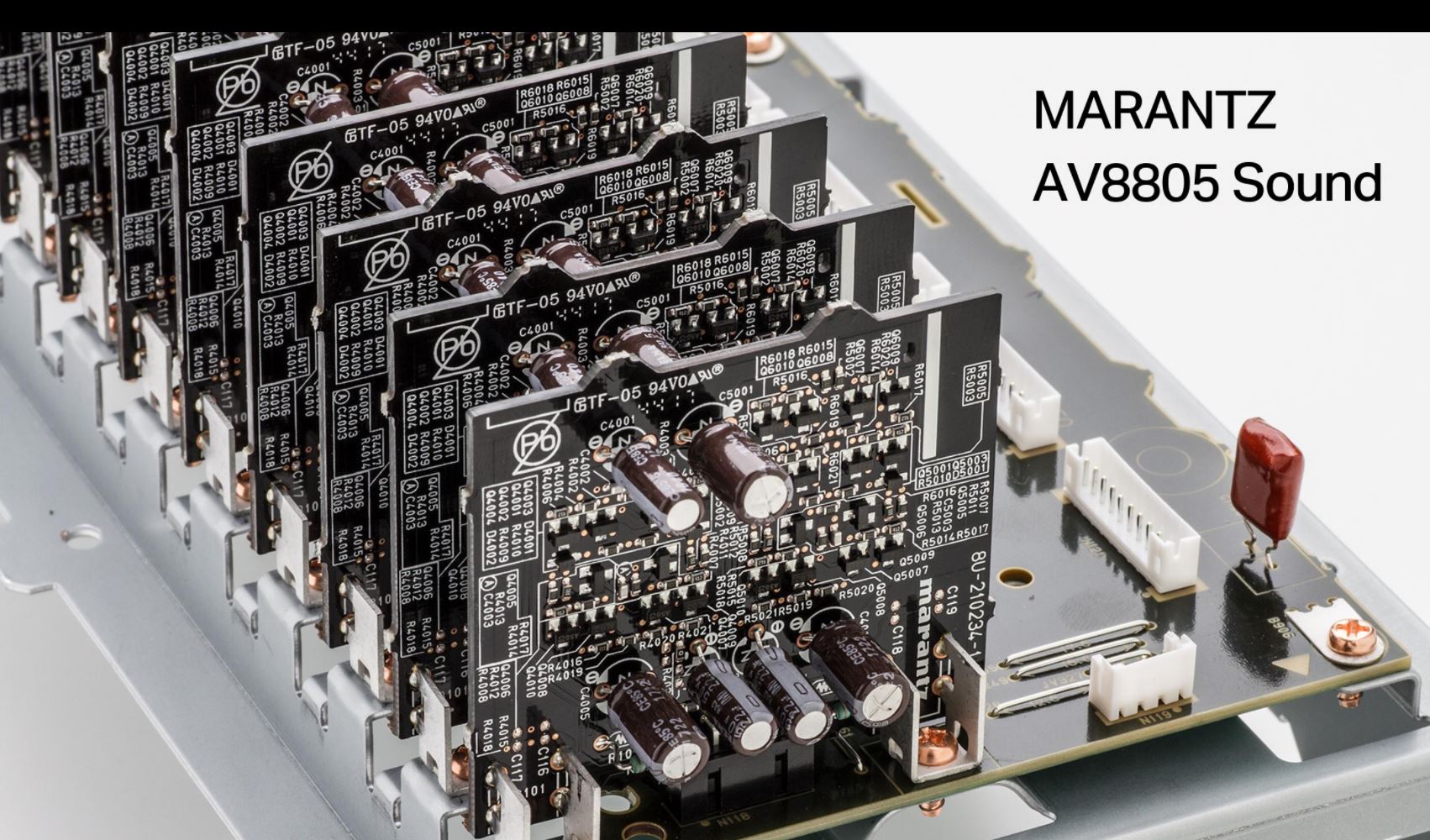This is a review and detailed measurements of the Marantz AV8805A Audio/Video Processor (no amplifier). It is on kind loan from a member to see how the switch to ESS DAC has impacted the performance of this processor. AV8805A costs US $4999. I previously tested the AV8805 version.
Even though the cardboard box says AV8805A, there is no such designation on the unit itself, front or back:


You all know I am not a fan of Marantz designs. The porthole display is too small causing you to flip down the panel to see what the AVR is doing. If the porthole was pretty it would be one thing but I think it is odd looking. The back panel is silliness in the extreme with gold plated obsolete video inputs such as component and composite.
Anyway, the unit came with the latest firmware (owner had tested it first) and I performed a factory reset before testing.
Marantz AV8805A Measurements
I am using a mix of Toslink and HDMI inputs for the tests so let's look at both in our dashboard:


SINAD when adjusted to the same 4 volt output is a hair better than before:

There are a lot of spurious tones however. Their levels are too low to impact SINAD due to high distortion but still, it shows lack of good engineering hygiene.
Unlike a number of other Marantz products, the top performance is reached at 4 volts output which is good:

Dynamic range is 3 dB worse than before:

IMD distortion shows less saturation than with the older DACs:

Sadly the same slow filter is used for the DAC:

Predictably jitter spectrum is not clean:

Multitone is decent likely because it has lower levels than our other test signals:

Linearity is a bit worse than before but in the same ballpark:

The slow filter comes to haunt the THD+N vs frequency test:

The spurious tones that should have been filtered were not causing them to sink SINAD at higher frequencies. Switching to 192 kHz removes that issue but still shows that performance is nothing to write home about being many dBs worse than our $99 reference DAC.
Conclusions
Performance here is not awful but clearly could be a lot better as sister group Denon has shown. $5,000 is a ton of money for an AV product so performance needs to be much more optimized than it is. Anyway, good news is that switch to ESS DAC from AKM has not resulted in any harm. Overall performance remains quite similar.
----------
As always, questions, comments, recommendations, etc. are welcome.
Any donations are much appreciated using: https://www.audiosciencereview.com/forum/index.php?threads/how-to-support-audio-science-review.8150/
Even though the cardboard box says AV8805A, there is no such designation on the unit itself, front or back:
You all know I am not a fan of Marantz designs. The porthole display is too small causing you to flip down the panel to see what the AVR is doing. If the porthole was pretty it would be one thing but I think it is odd looking. The back panel is silliness in the extreme with gold plated obsolete video inputs such as component and composite.
Anyway, the unit came with the latest firmware (owner had tested it first) and I performed a factory reset before testing.
Marantz AV8805A Measurements
I am using a mix of Toslink and HDMI inputs for the tests so let's look at both in our dashboard:
SINAD when adjusted to the same 4 volt output is a hair better than before:
There are a lot of spurious tones however. Their levels are too low to impact SINAD due to high distortion but still, it shows lack of good engineering hygiene.
Unlike a number of other Marantz products, the top performance is reached at 4 volts output which is good:
Dynamic range is 3 dB worse than before:
IMD distortion shows less saturation than with the older DACs:
Sadly the same slow filter is used for the DAC:
Predictably jitter spectrum is not clean:
Multitone is decent likely because it has lower levels than our other test signals:
Linearity is a bit worse than before but in the same ballpark:
The slow filter comes to haunt the THD+N vs frequency test:
The spurious tones that should have been filtered were not causing them to sink SINAD at higher frequencies. Switching to 192 kHz removes that issue but still shows that performance is nothing to write home about being many dBs worse than our $99 reference DAC.
Conclusions
Performance here is not awful but clearly could be a lot better as sister group Denon has shown. $5,000 is a ton of money for an AV product so performance needs to be much more optimized than it is. Anyway, good news is that switch to ESS DAC from AKM has not resulted in any harm. Overall performance remains quite similar.
----------
As always, questions, comments, recommendations, etc. are welcome.
Any donations are much appreciated using: https://www.audiosciencereview.com/forum/index.php?threads/how-to-support-audio-science-review.8150/



